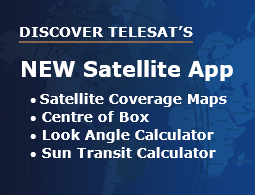Today, almost half of the world’s population does not have access to affordable, reliable, high-speed internet. Despite progress in expanding internet connectivity and reducing coverage gaps for 4G/LTE networks over the past few years, the gap threatens to widen as 5G deployments begin in cities, leaving the rural and remote communities that don’t have access to fibre further behind.
However, even as the telecom industry works to bridge the digital divide, a blind spot remains: truly connecting these underserved areas requires more than just getting broadband into individual homes, but also requires reliable, affordable, high-performance connectivity to businesses, hospitals, schools and public safety and government agencies – as well as providing the latest in 4G/LTE and 5G wireless services – to the entire community!
These organizations simply can’t rely on contended consumer broadband service plans for their enterprise connectivity needs. Some communities are considering the use of low earth orbit (LEO) satellite networks but most have been designed to support direct-to-consumer home connectivity, and each LEO satellite has fixed coverage areas and beams that were designed to serve individual households in dense populations. We foresee this falling far short of the capacity and data rates required to serve an entire community’s connectivity demands, where the data pipes available are not large enough or reliable enough to support critical services, resulting in contention in their services.
On-The-Go Connectivity
While the direct-to-home LEO model may solve for immediate needs in homes in remote communities (for those who can afford it), benefits will dissipate as soon as an individual leaves their home without quality 4G/5G coverage in the community. Consumers in rural and remote areas of the country expect access to the same affordable advanced wireless services as in urban environments. Expanding the latest wireless technologies to communities without a fibre backbone often relies on satellite connectivity for this backhaul. LEO networks that are designed to serve direct to consumer are not ideally suited to serve an entire community’s needs including a community’s cellular backhaul needs.
Designed for Community Growth
Without designing for enterprise connectivity, communities would experience throttled connectivity as their population and infrastructure expand and data needs increase. Communities need a resilient, flexible network design that can grow with them while providing affordable connectivity.
Why Telesat Lightspeed
For these reasons and more, bridging the digital divide cannot only be about bringing people online at home. Comprised of large carriers that can backhaul over 15 Gbps of data traffic into a single remote area, Telesat Lightspeed allows mobile network operators and internet service providers to bring consumer, enterprise and government connectivity services to the community, with a wide variety of affordable service plans. This robust capacity is made possible by sophisticated phased array antennas on each of the Telesat Lightspeed satellites which, when combined with beam hopping technology, activate around 135,000 beams in the network that can dynamically focus vast amounts of capacity into a single “hotspot.” In addition, every point on Earth will have multiple Telesat Lightspeed satellites in view and the ability to backhaul traffic to more than one location, meaning the network can easily adapt to changing and growing community needs.
Ultimately, a community is comprised of schools, fire departments, police stations, hospitals and other critical infrastructure that also needs to be connected – not to mention, people need reliable internet and phone service when they are on the go. By catering to and empowering communities as a whole, Telesat Lightspeed ensures people are connected both inside and outside of the home, so they can have access to remote learning, job opportunities, and e-commerce, as well as critical services like telemedicine that can bring diagnostics to remote communities – ensuring remote communities can fully participate and thrive in the digital economy.




